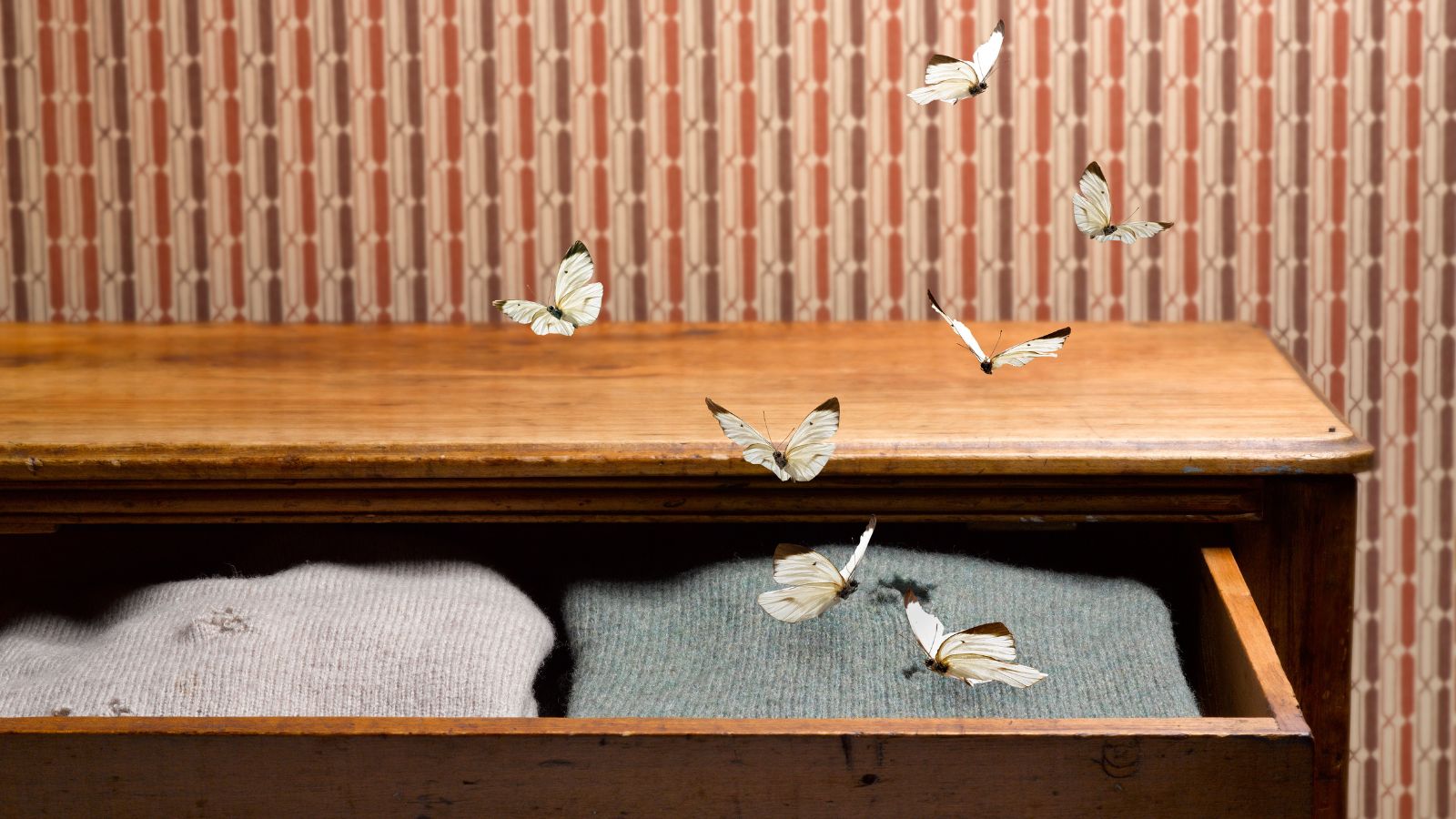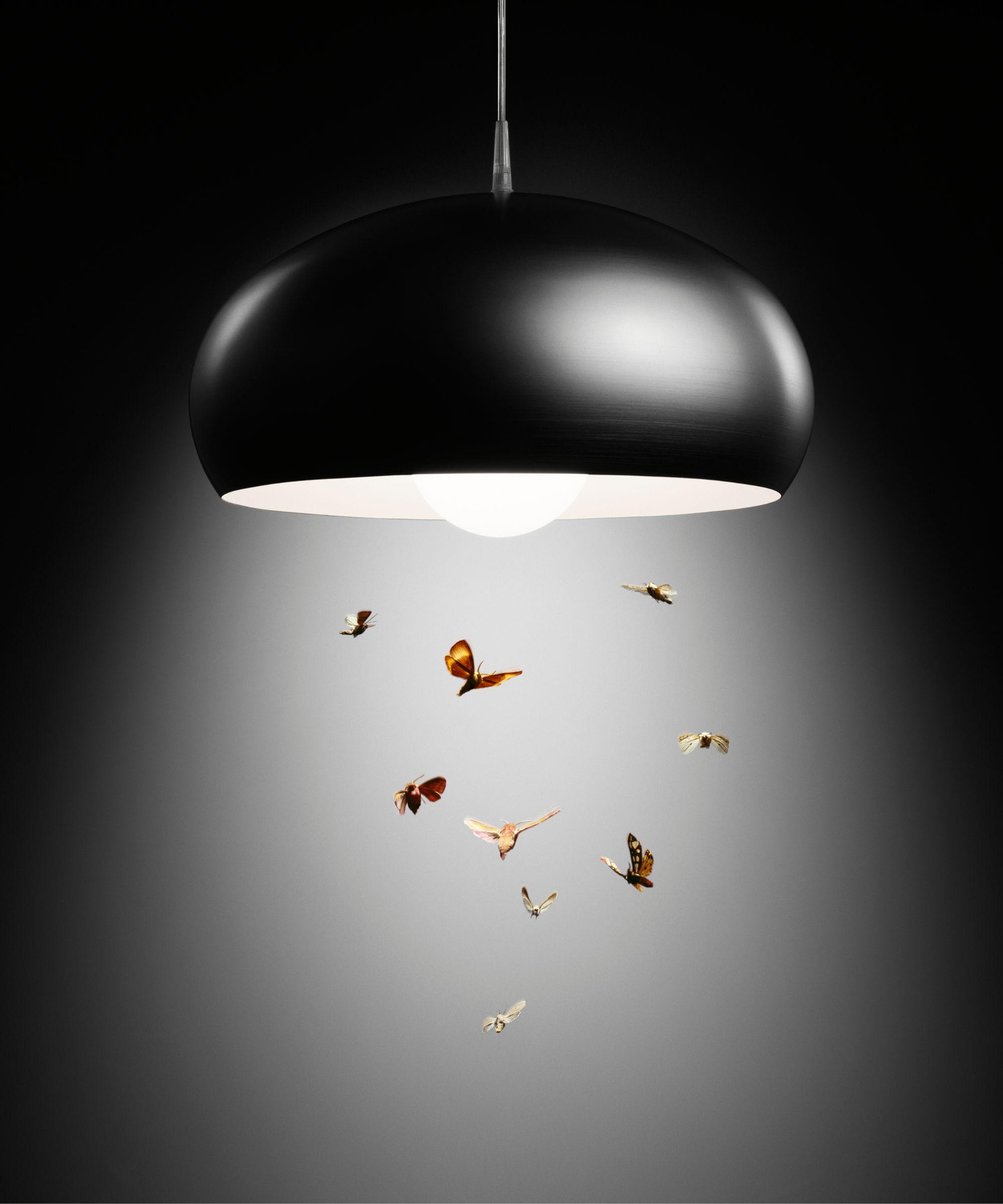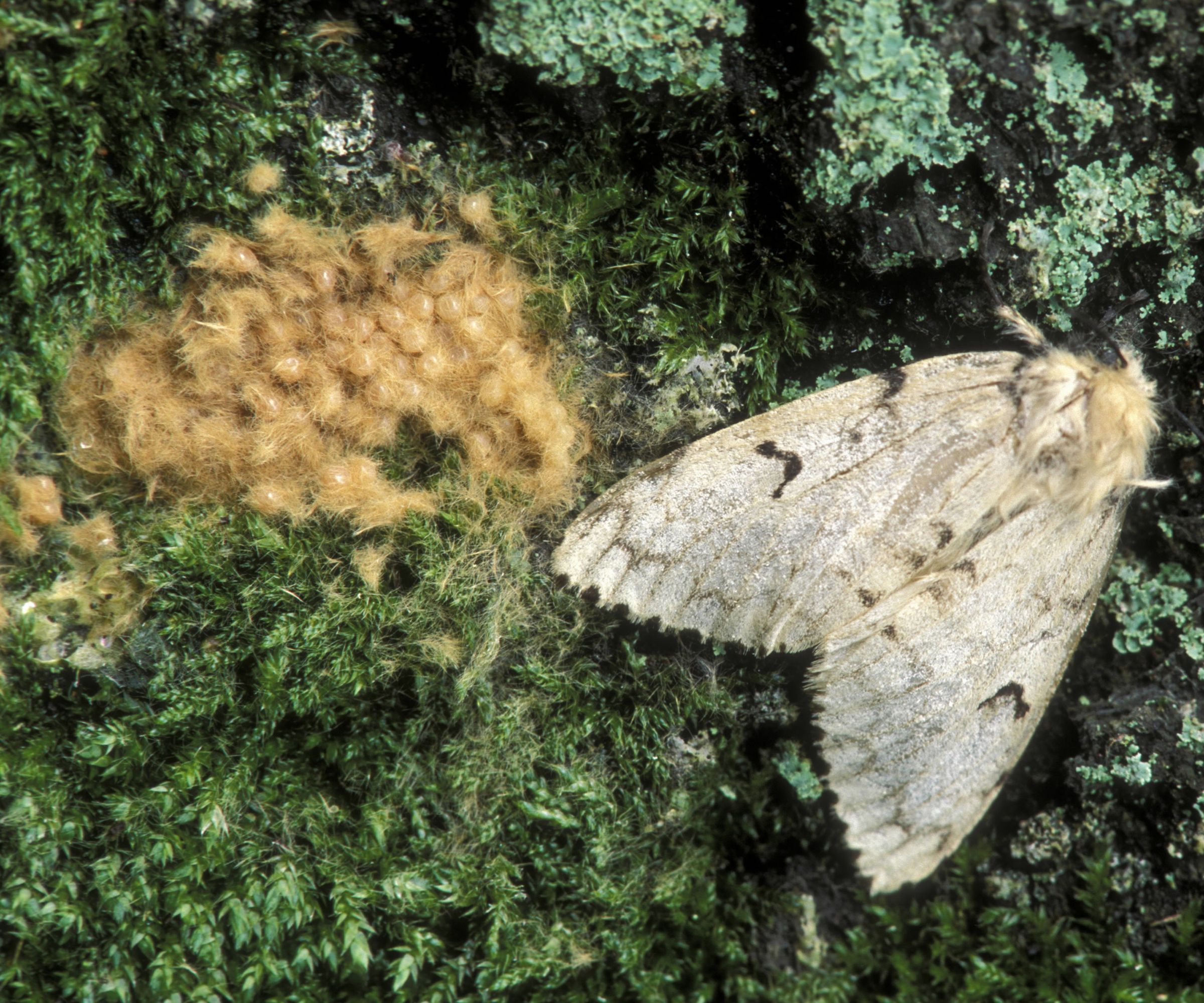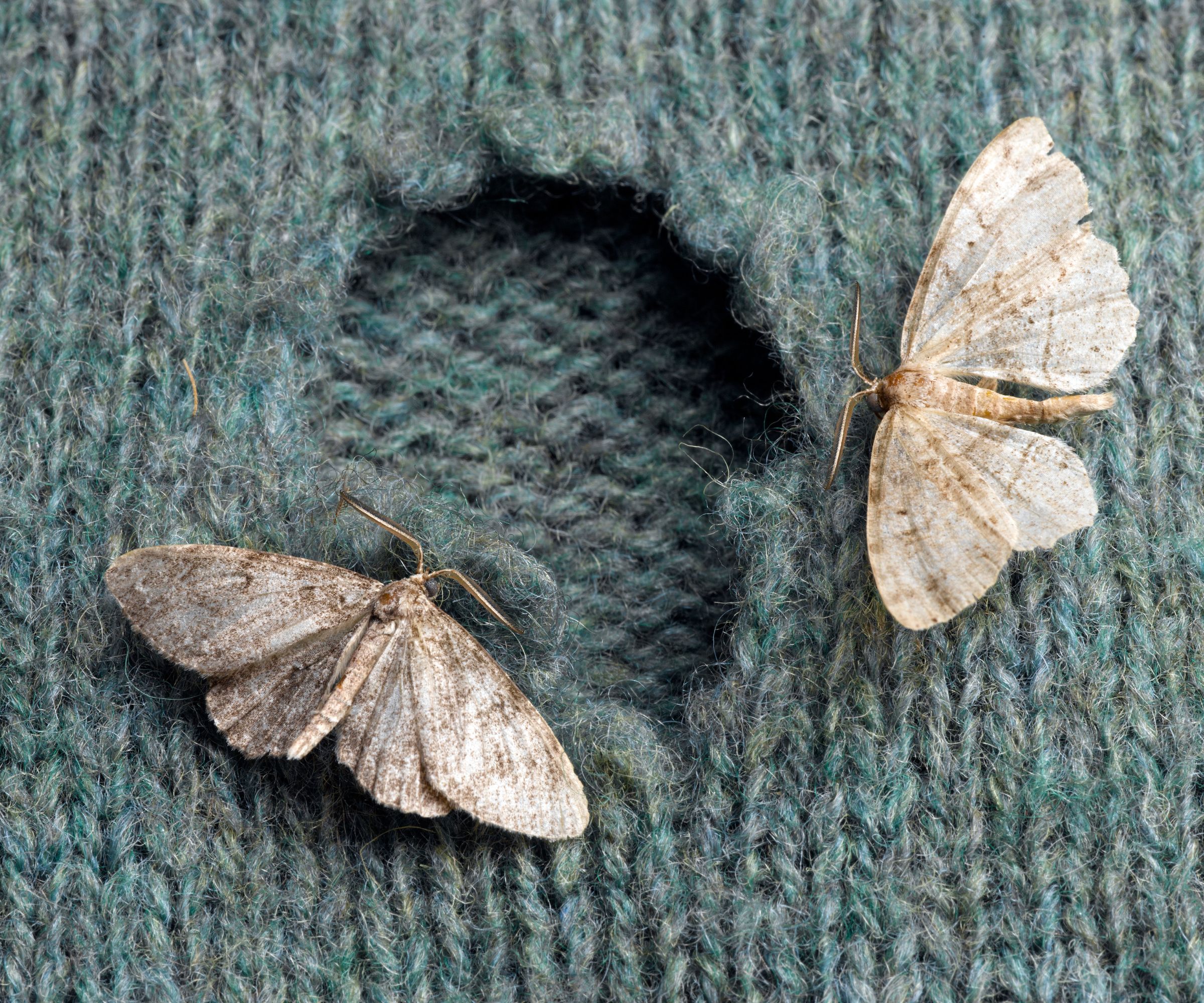7 signs you have moths in your home – and what to do to avoid damage
From the sudden appearance of holes in clothes to the unwelcome sight of moth larvae, these are the clues that your home has a moth infestation


You may well be alert to signs you have moths in your closet, especially if you've noticed new holes appearing in your clothes, but you should be looking for signs of moths in your whole home.
Unfortunately, there is more than one species of moth, and they like to munch on a variety of different materials, from carpet to carbs, in a variety of different spaces.
Below, with the help of pest experts, we list the clues that your home has moths, including where to look and the materials to protect in particular. We also offer the most effective solutions for getting rid of moths in each case.
7 signs of a moth infestation
First things first, these are the moths you need to worry about invading your home: clothes and carpet moths, which will put holes in everything from clothing to upholstery, and pantry moths, which enjoy snacking on bread and dry foods. It's the moth larvae that do the damage, spending around six weeks fattening themselves up on your belongings before becoming pupae and then adult moths who will start the cycle of egg-laying all over again.
This is how to spot a moth infestation, which is usually counted as six moths or more.
1. Adult moths

'Moths aren't the most subtle pests, so chances are if you have them in your house, you will see them flying around and crawling on your walls, out of your closet, or around your light fixtures at night,' says Brett Bennett, director of operations, PURCOR Pest Solutions.
Full-grown moths look pretty harmless: they're usually around one-fifth of an inch long and are a light golden or silvery brown with pale-colored wings. They prefer dark, undisturbed areas such as closets, drawers, or storage boxes.
Design expertise in your inbox – from inspiring decorating ideas and beautiful celebrity homes to practical gardening advice and shopping round-ups.
The bad news? If you've spotted adult moths, the moth larvae will already have eaten holes into your belongings. So, it's important to ensure you prevent moths in a closet and beyond so that the eggs don't hatch to become larvae in the first place.
There are various ways to do so, from hanging cedar wood rings in closets to lavender sachets to moth-repellent sachets. You can discourage pantry moths, who have a great sense of smell, by sealing opened dry goods in lidded containers, like these stackable ones from Amazon.
You will need to repeat treatments and be thorough in your approach. Serious infestations that you can't manage alone might require the help of a professional pest control company.
2. Sticky residue from larvae casings and cocoons
If you've spotted sticky casings and cocoons, it's likely the moth larvae have already done damage since they are the culprits. That said, following the same process as above, emptying and cleaning an affected area thoroughly will be key to ensuring the pupae (larvae becoming adults) don't become another generation of moths who will lay their own eggs, starting the process again.
3. Moth larvae and eggs

These look like small maggots, usually white or pink with brown heads. You might spot them crawling around areas where their food source is, such as wool sweaters or open boxes of cereal.
Adult moths will lay their tiny, and therefore difficult to see, eggs in dark corners, cracks, and crevices. If you spot a single larva, then tackle your closet or pantry quickly by emptying it, washing or laundering the contents, vacuuming thoroughly, steam cleaning, and ventilating it. You might be lucky enough to destroy all the remaining eggs and larvae before they start to feast. Be aware that moth eggs may be hidden in air ducts, behind loose baseboards, and in the high corners of a closet, cabinet, or pantry, so be thorough to get the job done properly.
4. Holes in clothes

Holes in clothes can be caused by something as mundane as a door key left in a washer or dryer. But suppose you've noticed that clean clothes that went into your closet in perfect condition are suddenly riddled with holes. In that case, it's very likely that the cause is moth larvae, especially if the clothing is made from natural materials, such as wool, fur, silk, and even feathers. That said, other insects cause holes in clothes, so you may need to investigate further to check.
Removing all your clothes from your closet or drawers, washing them on a hot cycle, steam cleaning them, or even putting delicate items in the freezer, then cleaning the closet or drawers thoroughly, and using the moth deterrents above may do the trick. You will need to be vigilant to ensure you have dealt with the problem properly.
5. Silver webs on upholstery

If you've noticed the finest, silkiest-looking webs on your couch or headboard, you should look harder for larvae since these are the remains of the larvae casings. They may not have moved far if there are food sources nearby, but look first in dark, safe corners, including the crevices of seating, and under and behind furniture pushed up against a wall.
6. Patches in carpets and area rugs

These won't appear dramatically overnight; instead, the progress the larvae make will be slow and steady, and almost undetectable. However, they will continue to do damage unchecked, so regular vacuuming is a must, and heat treating carpets with a steam cleaner is another step that can help kill any hidden pests. Clothes moth traps, such as these highly-rated buys from Amazon will trap adults to help stop the cycle.
7. Mini tunnels

'Clothes moths will furrow through clothing and pantry moths through food, so look out for small, irregular holes that are difficult to explain away,' advises Eliana Coca, cleaning expert and owner of E.C. House Cleaning. 'Check for silky tunnels or furrows in clothing, which are created by larvae. These tunnels often contain moth larvae, and you might also find moth eggs, which are tiny, pinhead-sized, and white.'
Bear in mind that pantry moths need different traps for clothes and carpet moths since they are attracted to different pheromones. This pantry moth trap is a bestseller on Amazon and can be a great technique to pest-proof your pantry.
FAQs
What are the signs of moths in carpets?
The first sign of moths in a carpet or area rug that you might see is damage to the carpet, which looks like something has carved a tiny, winding threadbare trail in the pile. Other signs to look for include adult moths fluttering about the room, tiny larvae (these can grow up to around one third of an inch but are almost indiscernible to begin with), sticky larvae shells, and tiny black dots, which are moth eggs, and incredibly hard to see.
What are signs of moths in closets?
Other than an adult moth crawling or flying out of your closet, it's likely that the first sign you'll see of moths in your closet is your once pristine clothing suddenly displaying holes. Bear in mind that moths tend not to eat cotton T-shirts (though it's not unheard of) but will target your luxury, natural materials, such as cashmere sweaters, silk shirts, and vintage furs.
Why do I have moths in my home?
Like all pests, moths are attracted to food sources, with clothes and carpet moths drawn to natural materials and pantry moths attracted to dry goods. It's worth noting that clothes/carpet moths are also enticed by our sweat and dead skin, so ensuring only clean clothes go into your closet and that dirty laundry is kept in a securely sealed basket will make your bedroom less attractive to them.
Moths can come into your home in a variety of ways: via secondhand clothes (hot wash or dry clean straight after purchase advised), in secondhand furniture and furnishings (steam clean or at least vacuum thoroughly), and in unsealed dry food, perhaps containers of birdseed or flour. And, of course, moths can come into your home through open doors and windows, so keeping screens shut is a good move.
To deal with moth infestations, Chris Parker, the founder of Parker Eco Pest Control has a few tips: 'Oust existing moths with traps and thorough cleaning. Wash or throw away infested clothes or food and scour all surfaces to eliminate eggs.
'Brush off wool or fur clothing after you wear it and store it in airtight bags or cool, ventilated, cedar closets to keep moths out of your clothes. Store food in airtight containers or the freezer to prevent kitchen moths. Look for and seal any cracks and crevices in your pantry, walls, or cabinets.'

Lola Houlton is a news writer for Homes & Gardens. She has been writing content for Future PLC for the past six years, in particular Homes & Gardens, Real Homes and GardeningEtc. She writes on a broad range of subjects, including practical household advice, recipe articles, and product reviews, working closely with experts in their fields to cover everything from heating to home organization through to house plants. Lola is a graduate, who completed her degree in Psychology at the University of Sussex. She has also spent some time working at the BBC.


